Everything You Need to Know About moving head dj light
- Unleashing Dynamic Brilliance: Your Guide to Moving Head DJ Lights
- What Exactly Are Moving Head DJ Lights?
- The Evolution of Moving Head Lighting Technology
- Key Components and How They Work
- The Light Source: LED Powerhouses
- Optics: Shaping the Beam
- Movement: Pan and Tilt Motors
- Control Systems: DMX, RDM, and Beyond
- Types of Moving Head DJ Lights for Every Application
- Spot Moving Heads: Precision and Projection
- Wash Moving Heads: Color and Coverage
- Beam Moving Heads: Aerial Effects and Intensity
- Hybrid Moving Heads: The Best of All Worlds
- Choosing the Right Moving Head DJ Light: A Buyer's Guide
- Determine Your Application and Venue Size
- Evaluate Brightness and Light Output
- Key Features to Look For
- Control and Connectivity Options
- Durability and Build Quality
- Budget and Value for Money
- Manufacturer Reputation and Support
- Installation and Setup Tips for Optimal Performance
- Maintenance for Longevity and Reliability
- The Future of Moving Head Lighting: Trends and Innovations
- Why Partner with a Professional Manufacturer Like LQE?
- Conclusion: Illuminating Your Vision with Moving Head DJ Lights
- Frequently Asked Questions (FAQs)
- What is the difference between a spot, wash, and beam moving head?
- How many DMX channels does a moving head light typically use?
- Can I use moving head lights outdoors?
- What's the average lifespan of an LED moving head light?
- Is it worth investing in high-end moving heads?
- What are gobos and prisms?
Unleashing Dynamic Brilliance: Your Guide to Moving Head DJ Lights
In the vibrant world of live entertainment, light is more than just illumination; it's a storyteller, a mood-setter, and a crucial element that elevates an event from ordinary to unforgettable. At the heart of this transformative power often lies the humble yet incredibly sophisticated moving head DJ light. Whether you're a seasoned stage designer, an aspiring DJ, an event planner, or simply curious about the magic behind stunning visual displays, understanding these versatile fixtures is key to creating truly immersive experiences. From pulsating club nights to grand theatrical productions and intimate wedding receptions, the dynamic capabilities of moving head lights have made them indispensable tools in modern stage lighting. This comprehensive guide will illuminate everything you need to know about these captivating devices, helping you make informed decisions and truly master the art of light.
What Exactly Are Moving Head DJ Lights?
At its core, a moving head DJ light, often simply referred to as a "moving head," is a sophisticated lighting fixture designed for dynamic and flexible light projection. Unlike traditional static lights, these fixtures boast motorized bases that allow the light beam to move fluidly across a stage or venue. This movement is typically controlled along two axes: pan (horizontal rotation) and tilt (vertical movement), offering a vast range of motion that can cover large areas with precision and speed. The ability to change direction, color, shape, and intensity in real-time makes them incredibly versatile for creating captivating visual effects. Modern moving head lights predominantly use powerful LED technology, offering superior brightness, energy efficiency, and a significantly longer lifespan compared to older lamp-based systems. This evolution has not only made professional stage lighting more sustainable but also more accessible to a wider array of events and venues, from small DJ setups to massive concert stages and corporate events.
The Evolution of Moving Head Lighting Technology
The journey of moving head lighting is a testament to rapid technological advancement in the entertainment industry. Early moving lights, dating back to the 1980s, were bulky, noisy, and relied on discharge lamps, which required significant power and frequent replacement. They were also considerably more expensive, limiting their use to large-scale professional productions. However, the advent of digital control protocols like DMX512 revolutionized their operability, making complex programming feasible. The real game-changer arrived with the widespread adoption of LED technology. LED moving head lights marked a paradigm shift, offering a host of benefits:
- Energy Efficiency: LEDs consume far less power, leading to lower operating costs and reduced heat output.
- Extended Lifespan: LED sources can last tens of thousands of hours (e.g., 50,000+ hours) compared to a few hundred for traditional lamps, minimizing maintenance.
- Vibrant Colors: Superior color mixing capabilities (RGBW, CMY) allow for an almost infinite palette of hues.
- Compact Design: The smaller size and lighter weight of LEDs enable more compact and versatile fixture designs.
- Instant On/Off: LEDs offer immediate response, crucial for fast-paced light shows, unlike discharge lamps that require warm-up time.
These advancements have made professional LED moving head lights the industry standard, allowing manufacturers like LQE to push the boundaries of design and performance, delivering high-end digital stage lighting solutions that meet the demanding needs of various applications.
Key Components and How They Work
Understanding the inner workings of a moving head DJ light helps appreciate its sophisticated capabilities. Each component plays a vital role in shaping the final light output and effect:
The Light Source: LED Powerhouses
As mentioned, most modern moving head lights utilize LED arrays. These come in various configurations, from single powerful LEDs to multiple smaller emitters. The choice of LED type (e.g., RGBW, CMY) determines the color mixing capabilities, allowing for a vast spectrum of colors without external gels. The wattage of the LED directly correlates with the brightness of the fixture, measured in lumens or lux, a crucial factor when selecting a `professional stage lighting` solution for specific venues.
Optics: Shaping the Beam
The optical system is where the magic of light shaping happens. It includes:
- Lenses: Magnify or narrow the beam, often with motorized zoom and focus functions for precise control.
- Gobos: Small stencils (metal or glass) inserted into the light path to project patterns, textures, or custom logos. Moving head lights often have multiple gobo wheels, allowing for quick changes and even morphing effects.
- Prisms: Multi-faceted glass elements that split a single beam into multiple identical beams, creating stunning aerial effects or covering wider areas.
- Frost Filters: Soften the edges of the light beam, transforming a sharp beam into a wash-like effect, ideal for blending colors or creating atmospheric backgrounds.
- Color Wheels: While LED lights primarily use RGBW/CMY mixing, some fixtures retain color wheels for specific pre-set colors or split-color effects.
Movement: Pan and Tilt Motors
The defining feature of moving head lights is their ability to move. Precision stepper motors control the pan (horizontal rotation, typically 540° or 630°) and tilt (vertical movement, typically 270°). The speed, accuracy, and smoothness of these motors are critical for seamless light shows and depend heavily on the quality of the `moving head lights` and their manufacturing.
Control Systems: DMX, RDM, and Beyond
The brain of the moving head light is its control system. DMX512 (Digital Multiplex) is the universal standard for professional lighting control, allowing a single DMX controller to manage hundreds of channels, each assigned to a specific function (e.g., pan, tilt, color, gobo, dimmer). RDM (Remote Device Management) extends DMX by allowing two-way communication, enabling remote addressing, status monitoring, and fixture configuration. Many modern `digital stage lighting` fixtures also offer wireless DMX options for cleaner setups and enhanced flexibility, crucial for various `event lighting solutions`.
Types of Moving Head DJ Lights for Every Application
Moving head lights come in several distinct types, each designed for specific effects and applications. Understanding these differences is crucial for choosing the right `moving head dj light` for your needs.
Spot Moving Heads: Precision and Projection
Spot moving heads are characterized by their ability to project a focused beam of light, often with sharp edges. They are excellent for projecting gobos, creating defined shapes, and highlighting specific areas on stage. With features like zoom, focus, and multiple gobo wheels, spot moving heads are ideal for creating complex visual textures, animated patterns, and dramatic spotlighting. They are frequently used in `theaters, music concert stages, exhibitions, and theme parks` where precise visual storytelling is paramount.
Wash Moving Heads: Color and Coverage
Wash moving heads are designed to produce a soft-edged, wide beam of light, perfect for flooding a stage or venue with color. Their primary function is to create atmospheric backgrounds, wash walls with vibrant hues, or illuminate performers with smooth, even light. Wash lights typically feature advanced RGBW or CMY color mixing systems, allowing for a vast spectrum of colors. They often have motorized zoom capabilities to adjust the beam angle from a narrow wash to a very wide flood. These are staples in `nightclubs, leisure venues, broadcasting, and religious spaces` where expansive color coverage enhances the environment.
Beam Moving Heads: Aerial Effects and Intensity
Beam moving heads produce an extremely narrow, intense, and parallel beam of light, designed to cut through haze or fog to create stunning aerial effects. The light output is highly concentrated, making the beam appear solid and visible over long distances. While they often lack extensive gobo or zoom capabilities, their sheer intensity and ability to create dramatic mid-air patterns make them perfect for high-energy `concert lighting`, large-scale `DJ lighting` setups, and `club lighting` where dynamic visual impact is desired. The focused power of a beam light can truly elevate the energy of a performance.
Hybrid Moving Heads: The Best of All Worlds
Hybrid moving heads are the multi-taskers, combining the features of spot, wash, and beam fixtures into a single unit. Through clever optical design, these lights can switch between narrow, intense beams, sharp gobos, and wide washes. This versatility makes them incredibly popular for events where space is limited or where diverse effects are needed from fewer fixtures. For `event lighting solutions` that require maximum flexibility, `hybrid moving heads` offer unparalleled value, reducing the need for multiple specialized fixtures.
Choosing the Right Moving Head DJ Light: A Buyer's Guide
Selecting the perfect `moving head dj light` can be a daunting task given the myriad options available. Here’s a guide to help you make an informed decision:
Determine Your Application and Venue Size
The first step is to clarify where and how the lights will be used. A small club DJ setup will have different requirements than a large outdoor concert or a theatrical production. Consider the throw distance, ceiling height, and overall ambient light levels of your venue. This will guide your choice between spot, wash, beam, or hybrid types, and dictate the necessary brightness output for your `stage lighting` needs.
Evaluate Brightness and Light Output
Brightness, often measured in lumens or lux, is a critical factor. For large venues or outdoor events, high-output fixtures are essential to ensure the light effects are visible and impactful. However, for smaller, more intimate settings, excessively bright lights might be overpowering. Look at the wattage of the LED source, but also consider the efficiency of the optics, as a well-designed optical system can make a lower-wattage LED appear brighter. Investing in `high-end moving heads` often means better optical efficiency.
Key Features to Look For
Consider the specific effects you want to achieve:
- Gobos and Gobo Wheels: How many gobos? Are they interchangeable? Are they rotating or static? Glass or metal?
- Prism Effects: What prism options are available (e.g., 3-facet, 6-facet)? Can they rotate?
- Zoom and Focus: Motorized zoom allows for dynamic beam size changes. Motorized focus ensures sharp projections at varying distances.
- Color Mixing: RGBW (Red, Green, Blue, White) offers direct color mixing, while CMY (Cyan, Magenta, Yellow) provides subtractive color mixing, often favored for subtle color changes and broader palette.
- Strobe and Dimming: Look for smooth dimming curves (0-100%) and adjustable strobe speeds.
- Frost Filter: Essential for transforming sharp beams into soft washes.
Control and Connectivity Options
Most professional fixtures use DMX512. Consider the number of DMX channels required for full functionality. Support for RDM is a bonus for remote configuration. For easier setup, especially in mobile DJ environments, consider `moving head dj light` options with built-in programs or sound-active modes. Wireless DMX capabilities can also simplify cabling and enhance flexibility for your `lighting equipment`.
Durability and Build Quality
Stage lighting equipment often faces rigorous conditions. Look for robust construction, quality components, and reliable motors. A well-built fixture will offer better longevity and consistent performance, minimizing downtime and maintenance costs. Companies like LQE, specializing in `middle- and high-end digital stage lighting` with extensive quality control and `80 national patents`, prioritize delivering `high-quality, long-lasting lighting solutions` that can withstand the demands of professional use.
Budget and Value for Money
While it's tempting to opt for the cheapest option, remember that `professional stage lighting` is an investment. High-quality fixtures offer better performance, reliability, and a longer lifespan, leading to better long-term `cost-effectiveness`. Consider the total cost of ownership, including potential repair and replacement costs. When you `buy moving head lights` from reputable manufacturers, you're not just buying a product, but also support and peace of mind.
Manufacturer Reputation and Support
Choosing a manufacturer with a strong reputation for R&D, quality production, and `exceptional customer service` is paramount. A reliable partner like LQE, with a `10,000 sq m production base` and `100,000 lighting fixtures annually`, ensures you receive `first-class modern stage lighting equipment` and ongoing support. For specialized needs, an `OEM/ODM stage lighting equipment manufacturer` can provide custom solutions tailored to your unique vision.
Installation and Setup Tips for Optimal Performance
Proper installation and setup are crucial for maximizing the performance and safety of your `moving head dj light` fixtures. Here are some essential tips:
- Secure Mounting: Always use appropriate mounting hardware (clamps, safety cables) suitable for the fixture's weight. Whether truss-mounted, floor-standing, or on a stand, ensure stability and compliance with local safety regulations.
- Power Requirements: Verify the power consumption of each light and ensure your power distribution system can handle the load. Use proper gauge cables and ensure all connections are secure.
- DMX Cabling and Addressing: Use high-quality DMX cables (5-pin or 3-pin, depending on the fixture, but always actual DMX cable, not microphone cable). Terminate your DMX chain with a DMX terminator if you have a long run or experience signal issues. Correctly address each fixture with a unique DMX starting address.
- Fixture Orientation: Consider the desired light paths and coverage when positioning your moving heads. Experiment with different angles to achieve the most impactful effects.
- Haze/Fog Integration: Moving head beam and aerial effects are significantly enhanced by the presence of haze or fog, which makes the light beams visible in the air.
- Safety Checks: Before and after each use, perform a quick visual inspection for any loose cables, damaged components, or unusual sounds.
Maintenance for Longevity and Reliability
Regular maintenance is key to ensuring your `moving head lights` remain in top condition and deliver `long-lasting lighting solutions`. A proactive approach can prevent costly repairs and extend the lifespan of your investment.
- Keep it Clean: Dust and debris can accumulate on lenses, gobos, and fans, reducing light output and causing overheating. Regularly clean the exterior with a soft, lint-free cloth. For optics, use specialized lens cleaner and wipes.
- Fan and Vent Checks: Ensure cooling fans are free of obstructions and vents are clear. Overheating is a primary cause of component failure in LED fixtures.
- Software and Firmware Updates: Periodically check the manufacturer's website for firmware updates. These can improve performance, add new features, or fix bugs.
- Cable and Connection Integrity: Inspect DMX and power cables for wear, tears, or bent pins. Secure connections prevent intermittent issues.
- Mechanical Inspection: Listen for unusual noises from motors. Ensure pan and tilt movements are smooth and free of obstructions.
- Professional Servicing: For complex issues or deep cleaning, consider professional servicing from qualified technicians.
By following these simple maintenance guidelines, you can protect your `professional stage lighting` investment and ensure consistent, high-quality performance for years to come, reflecting LQE's commitment to durability and excellence.
The Future of Moving Head Lighting: Trends and Innovations
The stage lighting industry is constantly evolving, driven by technological advancements and creative demands. The future of `moving head dj light` technology promises even more exciting possibilities:
- Enhanced LED Power and Efficiency: Expect even brighter and more energy-efficient LEDs, allowing for more compact fixtures with greater output.
- Advanced Optics and Effects: Innovations in lens design, gobo creation, and multi-functional prisms will lead to more intricate and dynamic visual effects.
- Smarter Control and Automation: Integration with IoT (Internet of Things) platforms, AI-driven programming, and more intuitive control interfaces will simplify complex light shows. Remote monitoring and diagnostics will become standard.
- Miniaturization and Portability: As technology shrinks, moving heads will become even smaller, lighter, and more portable, opening up new creative possibilities for mobile DJs and smaller venues.
- Sustainability: Continued focus on eco-friendly materials, energy conservation, and longer product lifecycles will be paramount.
- Customization and Integration: The demand for bespoke `digital stage lighting` solutions will grow, further highlighting the importance of `OEM/ODM stage lighting equipment manufacturer` partners capable of delivering tailored innovations.
LQE's vision to become the `world's leading manufacturer of LED stage lighting` underscores our commitment to R&D and staying at the forefront of these exciting trends, continually pushing the boundaries of what `moving head lights` can achieve.
Why Partner with a Professional Manufacturer Like LQE?
When it comes to `buying moving head lights` and other `stage lighting equipment`, choosing the right manufacturer is as crucial as selecting the right product. LQE stands out as a premier `professional OEM/ODM stage lighting equipment manufacturer` for several compelling reasons:
- Experience and Expertise: Founded in 2008, LQE boasts over a decade of experience in the industry, specializing in `middle- and high-end digital stage lighting`. Our deep understanding of market needs and technological nuances ensures you receive cutting-edge products.
- R&D and Innovation: With `80 national patents` to our name, LQE is a leader in research and development. We are committed to constantly innovating, bringing new and improved `moving head lights` and `lighting equipment` to the market.
- Production Capacity and Quality: Our state-of-the-art `production base covers an area of about 10,000 square meters` and has the ability to `produce 100,000 lighting fixtures annually`. This scale, combined with stringent quality control, guarantees `first-class modern stage lighting equipment`.
- Diverse Product Range: Whether you need `moving head lights` for a concert, static lights for a theater, or specialized `event lighting solutions` for a theme park, our diverse portfolio caters to a wide array of applications.
- OEM/ODM Capabilities: As an `OEM/ODM manufacturer`, we offer unparalleled flexibility to customize solutions according to your specific requirements, helping `stage designers and producers realize their vision`.
- Value and Service: We are committed to providing `exceptional customer service` and delivering the `best value and cost-effectiveness in the industry`. Our goal is to offer `high-quality, long-lasting lighting solutions` that meet your budget without compromising on performance or reliability.
Partnering with LQE means investing in quality, innovation, and a commitment to transforming your lighting concepts into breathtaking realities.
Conclusion: Illuminating Your Vision with Moving Head DJ Lights
Moving head DJ lights are far more than just stage fixtures; they are dynamic tools that empower designers and performers to sculpt atmosphere, amplify emotion, and create truly unforgettable visual narratives. From their intricate internal mechanics and diverse functionalities to their pivotal role in modern entertainment, these `moving head lights` have fundamentally reshaped the landscape of `stage lighting`. As technology continues to advance, we can anticipate even more innovative and efficient `digital stage lighting` solutions that push the boundaries of creative expression.
Whether you're looking to enhance a small gig, outfit a professional venue, or explore `high-end moving heads` for a grand production, understanding the nuances of these fixtures is your first step toward mastery. By carefully considering your application, desired features, and partnering with a reputable `lighting equipment manufacturer` like LQE, you can ensure your `event lighting solutions` not only meet but exceed expectations, delivering brilliant, long-lasting impact and helping you realize every facet of your creative vision.
Frequently Asked Questions (FAQs)
What is the difference between a spot, wash, and beam moving head?
A spot moving head produces a focused, hard-edged beam ideal for gobos and precise projections. A wash moving head creates a soft-edged, wide light for coloring large areas. A beam moving head generates a very narrow, intense beam specifically for aerial effects in haze or fog.
How many DMX channels does a moving head light typically use?
The number of DMX channels can vary significantly based on the fixture's complexity and features. Basic moving heads might use 8-16 channels, while more advanced high-end moving heads with extensive features (zoom, focus, multiple gobos, prisms, CMY mixing) can utilize 20-30 or even more channels.
Can I use moving head lights outdoors?
Standard moving head dj light fixtures are typically rated for indoor use. For outdoor applications, you need professional stage lighting specifically designed with an IP (Ingress Protection) rating of IP65 or higher. These fixtures are sealed against dust and water intrusion, making them suitable for challenging outdoor conditions.
What's the average lifespan of an LED moving head light?
High-quality LED moving head lights, especially those from reputable lighting equipment manufacturer like LQE, typically have an LED source lifespan of 50,000 hours or more. This significantly outlasts traditional discharge lamps, leading to lower maintenance and replacement costs.
Is it worth investing in high-end moving heads?
For professional stage lighting applications where performance, reliability, and specific effects are crucial, investing in high-end moving heads is often worth it. They offer superior brightness, advanced features, better build quality, precise control, and longer lifespan, ly providing better value and cost-effectiveness over time.
What are gobos and prisms?
A gobo is a stencil (metal or glass) inserted into a light path to project patterns, shapes, or logos. Prisms are multi-faceted glass elements that split a single light beam into multiple beams, creating dynamic aerial or stage effects. Both are key components in moving head lights for adding visual interest.
Best Moving Head Lights for Weddings and Events
How to Choose the stage lighting bar manufacturer and supplier in us?
Top led moving head wash light Manufacturers and Suppliers
Energy Efficiency and Power Consumption of Moving Heads
1000w
Does LQE Offer Customized Stage Moving Light Solution?
An experienced R&D team can provide customized digital stage lighting OEM/ODM solution service to meet clients’ unique demands from global markets, such as customized CRI parameter, Ingress protection rating, effect, etc.
Do You Supply After-Sale Service?
LQE lighting offers 7x24 hrs systematic SOP customer support with dedicated personnel, ensuring quick and comprehensive assistance for stage lighting needs.
What Kind of Certificates You Offer?
All kinds of certificates could be offered by LQE digital moving light factory, which depends on customer’s required, different pricing plan for different approval.
Distributor
Is there a minimum order quantity (MOQ) to become a distributor?
MOQ requirements vary based on the product line and market region. However, for long-term distribution partnerships, we are flexible and can start with a trial order to build trust.
Do you offer OEM/ODM support for distributors?
Yes, as a professional OEM/ODM manufacturer, we support brand customization, including logo printing, packaging design, and even custom features based on project needs.
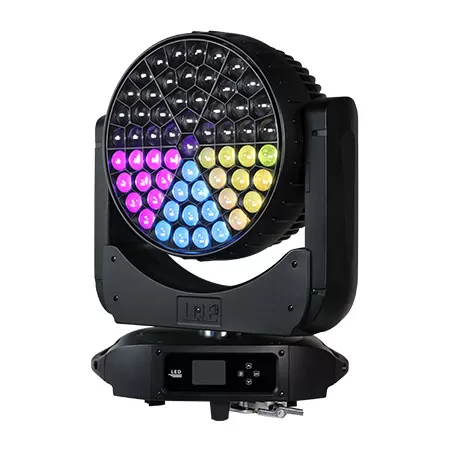
1000w 61x40w RGBW Stage Moving Head Wash Light LW1000
1000W 61x40W LED RGBW Mulichips Moving Head Wash Lights with Zoom (5°–50°), Covering Large Range and Long Distance. Designed to deliver a 5°–50° ultra-large zoom range to achieve a greater wash effect, illuminating stages and events with stunning lighting effects.
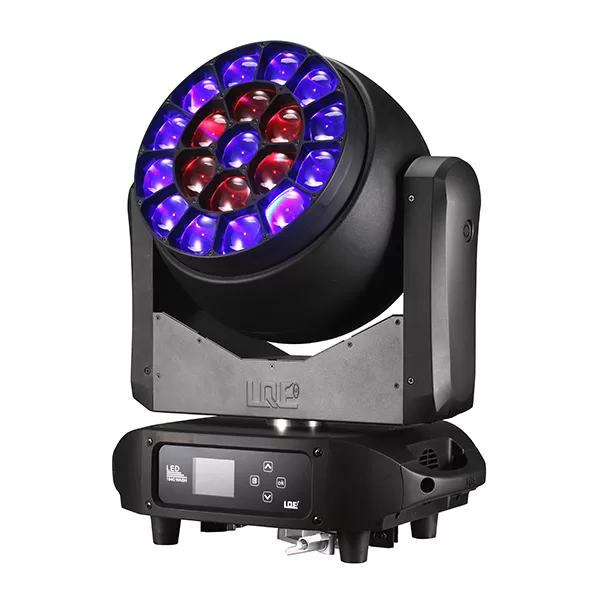
600w 19x40w RGBW Stage Moving Head Wash Light LW600 Zoom IP20
600W 19x40W LED RGBW Mulichips Moving Head Wash Lights with Zoom (5°–50°), Covering Large Range and Long Distance. IP20: Designed to deliver a 5°–50° ultra-large zoom range to achieve a greater wash effect, illuminating stages and events with stunning ring control lighting effects.

LED Moving Head Stage Wash Light LW200Z
The versatile moving head stage light provides a powerful lighting solution for theaters, concerts, and large outdoor performances. Suitable for theaters, TV stations, entertainment stages, and large outdoor performance scenes.
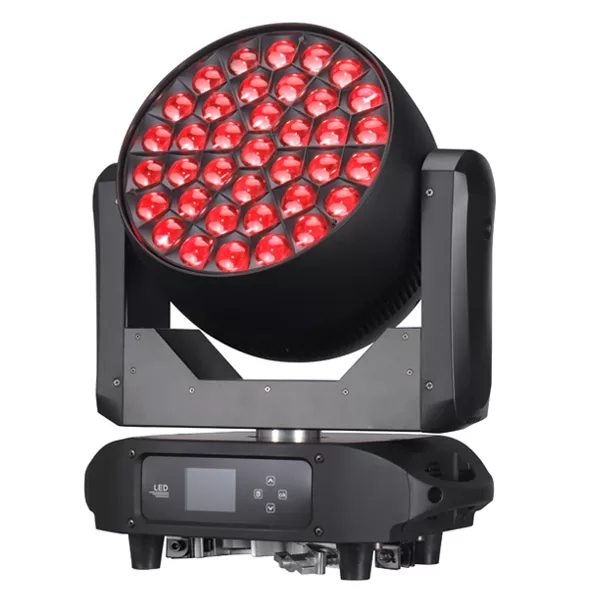
800w 37x40w RGBW Stage Moving Head Wash Light LW800
800W 37x40W LED RGBW Mulichips Moving Head Wash Lights with Zoom (5°-50°), Covering Large Range and Long Distance. Designed to deliver a 5°–50° ultra-large zoom range to achieve a greater wash effect, illuminating stages and events with stunning ring control lighting effects.

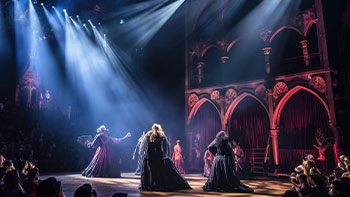
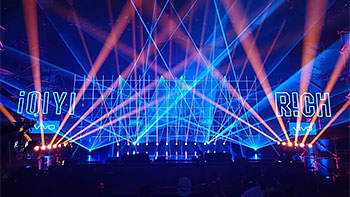
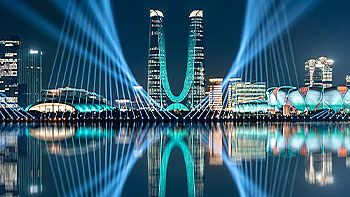
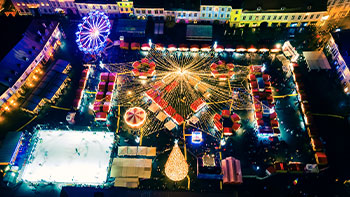
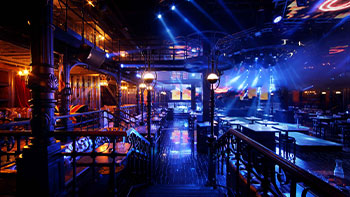
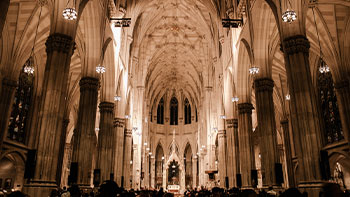






Linkedin
YouTube
Whatsapp: +8618924548390
TikTok